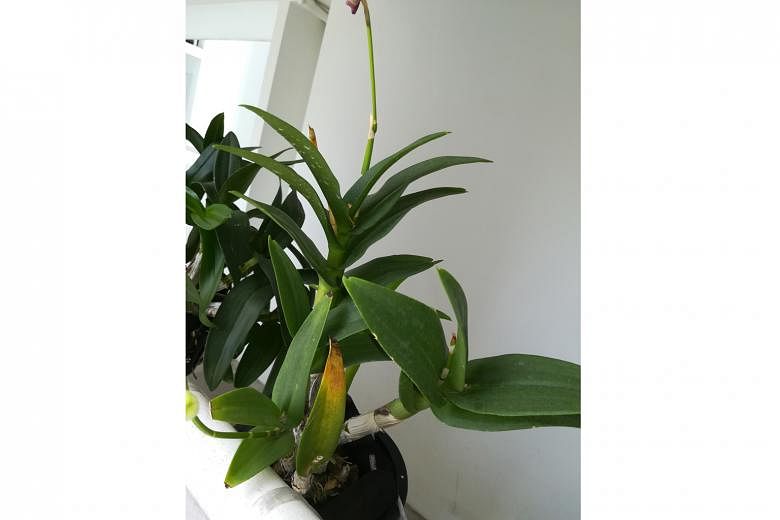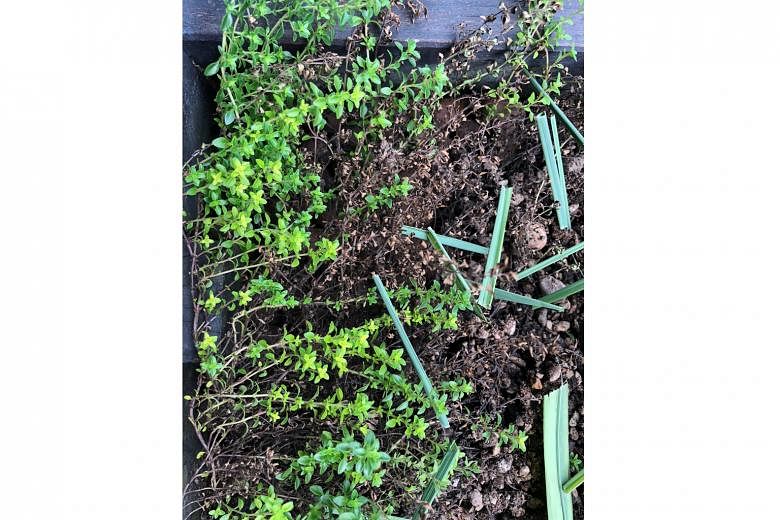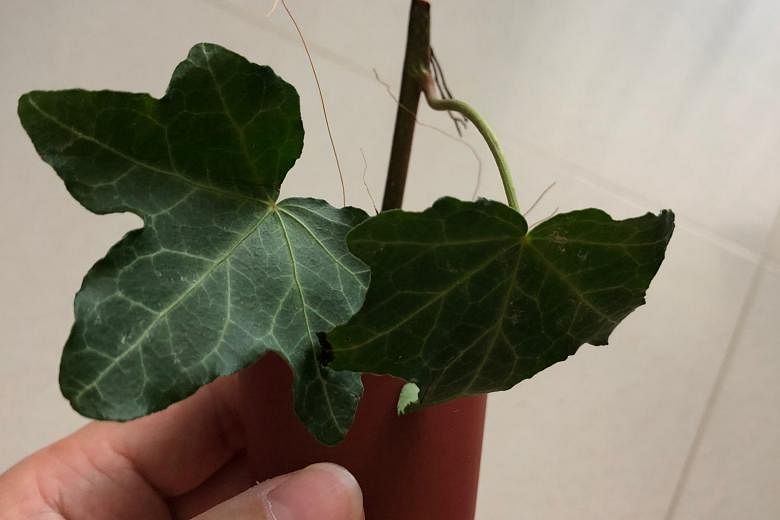Orchid plants may be lacking in sunlight
I have been growing my orchid for two years. I spray it with flowering liquid fertiliser once a week and, recently, I added goat dung.
Last year, I found several flower spikes about 1cm long, but they did not grow at all.
My plant is grown outside my flat and it gets little sun. What is wrong with my plant? Also, what is its species and can it adapt to Singapore's weather?
Serine Goh
The orchid is a Dendrobium hybrid that is likely to do well in Singapore. The issues you are facing are likely to be caused by the lack of sunlight that is required by the plant to grow well.
Such hybrids, if grown in a Housing Board corridor, will need to be exposed to at least four hours of direct sunlight for them to grow well and flower.
The lack of sunlight can cause flower buds to be infected by fungal diseases which cause them to die prematurely.
Also, avoid fertilising such orchids while they are budding as excessive fertiliser salts can cause shock and burns to the plants. The goat dung should be contained in a net and kept away from the roots to avoid burning them.
It is recommended that you use slow-release fertiliser pellets that are formulated for feeding orchids. These are sold by orchid nurseries.
Orchid growers also use water-soluble fertilisers to provide nutrients for their plants.
Thyme plant needs well-draining soil
My sage plants were doing well for a while until the roots started to dry out. The plants are dying.
What is the cause and how do I revive the plants?
Ah Lek Tan
The herb is a cultivar of thyme (botanical name - Thymus cultivar), and is not sage.
The issue you are facing is likely due to the plant growing in a wet and poorly drained growing media.
It may be difficult to save the plant at this stage.
You may want to take healthy tip cuttings and root them in a well-drained media that contains a higher proportion of coarse gritty materials like fine expanded clay pellets (Leca) or pumice.
Also, this plant should never be grown in an exposed area.
However, it needs a spot where it can get at least four hours of direct sunlight but sheltered from Singapore's tropical rains.
Brown spots on gloxinia are sucking pests
Lately, I noticed that despite flowering, my gloxinia has developed light brown spots along the stems and leaves. What are they and how can I get rid of them?
Mint Goh
Your gloxinia (botanical name - Sinningia speciosa) is infested by sucking insects, most probably scale insects. These pests can be controlled via organic, contact pesticides such as pyrethrin spray, summer oil, dilute castile soap solution or neem oil.
However, this plant is known to be particularly sensitive to pesticides, especially those that are oil-based.
You will likely need to make a very dilute pesticide solution and do a test application on a small part of the plant to ensure the concentration is well tolerated, before applying the pesticide on the entire plant.
Repeated sprays are recommended to ensure the pests are largely eradicated.
You may want to take healthy stem-cuttings and root them to start anew.
The infested portion of the plant can be discarded to reduce the risk of the infestation spreading to the rest of your plants.
As there may be lingering pests and their eggs on your new plants, pesticide can be applied at regular intervals as a preventive measure.
Dislodge ferns and pot them up to move to their new home
These two bird's nest ferns grow from the door frames of my balcony. Is there a way to remove them so that I can pot them and take them to my new house?
Elizabeth Chew
Your bird's nest ferns (botanical name - Asplenium nidus) can be separated from the wooden door frames. Use a sharp knife to cut them as close as you can towards the door frame. The ferns can then be potted up in a very porous, well-drained growing media, but bear in mind not to bury the ferns too deeply.
A good guide is to ensure the lowest leaves are well above the growing media and the central part of the ferns should not have any growing media on it.
English ivy prefers cooler conditions to grow well
My son brought this plant home. What plant is this and how do I care for it?
Tay Mei Mei
The cutting is likely that of an English ivy (botanical name - Hedera helix). It is commonly sold as a houseplant as it can be grown under lower light conditions that are often encountered indoors.
It grows best in an area where it can get at least four hours of filtered sunlight or under 12 hours of artificial light. It prefers a cool growing environment, preferably in an air-conditioned room, to thrive, and does not normally grow that well under Singapore's ambient tropical conditions.
• Answers by Dr Wilson Wong, an NParks-certified practising horticulturist and park manager. He is the founder of Green Culture Singapore and an adjunct assistant professor (Food Science & Technology) at the National University of Singapore.
• Have a gardening query? E-mail it with clear, high-resolution pictures of at least 1MB, if any, and your full name to stlife@sph.com.sg





